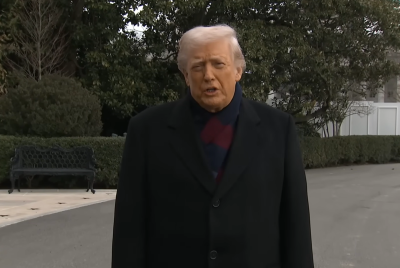Trump Fires National Portrait Gallery Director Kim Sajet Over 'Inappropriate' DEI Support

President Donald Trump has taken aim at yet another public institution, this time announcing the dismissal of Kim Sajet, director of the Smithsonian's National Portrait Gallery. The move has ignited controversy over the limits of presidential authority and further fuelled tensions around diversity, equity, and inclusion (DEI) in American cultural spaces.
Trump's Justification for Sajet's Dismissal
On 30 May 2025, Trump declared via Truth Social that Kim Sajet was being terminated for her alleged partisanship and support of DEI, which he deemed 'totally inappropriate' for her position.
'Upon the request and recommendation of many people, I am hereby terminating the employment of Kim Sajet as Director of the National Portrait Gallery. She is a highly partisan person and a strong supporter of DEI, which is inappropriate for her position. Her replacement will be named shortly,' Trump posted.
Trump also criticised a gallery caption that referenced his impeachments and 2024 comeback, calling it evidence of political bias.
Can Trump Legally Fire Sajet?
Trump's statement has raised serious questions about the extent of presidential power. The Smithsonian Institution, which oversees the National Portrait Gallery, operates independently under a trust established by Congress. Personnel decisions are handled by the Smithsonian Secretary, currently Lonnie G. Bunch III, and not by the executive branch.
Legal experts argue that Trump lacks the authority to dismiss Sajet unilaterally, as the Smithsonian does not fall under direct presidential control. If the firing proceeds, it may set a precedent for federal overreach into culturally autonomous institutions.
Kim Sajet's Background and Career
Kim Sajet is an art historian with a global background. Born in Nigeria and raised in Australia, she holds Dutch citizenship and an impressive academic portfolio, including a doctorate in liberal studies from Georgetown University and multiple degrees in art history and museum studies.
Before taking the helm at the Portrait Gallery in 2013, Sajet led the Historical Society of Pennsylvania and held senior roles at both the Pennsylvania Academy of the Fine Arts and the Philadelphia Museum of Art.
Under her leadership, the National Portrait Gallery expanded its collection and drew nearly 2 million annual visitors. Sajet also launched the PORTRAITS podcast, exploring the interplay of art, biography, and identity.
A Legacy of Inclusive Curation
Sajet is widely recognised for her efforts to make the museum more inclusive. She has increased the representation of women and people of colour in the gallery's permanent collection and curated exhibits that address racial justice and social change.
Her initiatives include the 'Identify' performance series, inviting artists to engage with themes of race, gender, and personal history through live presentations. One notable exhibition, Perspectives: The Atlantic's Writers at the National Portrait Gallery, focused on the evolution of civil rights narratives in America.
Cultural Clash and Institutional Autonomy
Trump's attempt to dismiss Sajet underscores a deeper cultural conflict over who gets to shape national identity. The National Portrait Gallery, under Sajet, has aimed to reflect a more nuanced and inclusive America. By contrast, the Trump administration continues to target DEI efforts as politically motivated.
Whether the attempted firing holds legal weight remains to be seen. But what is clear is that the struggle between federal influence and institutional independence is far from over.
© Copyright IBTimes 2025. All rights reserved.





















